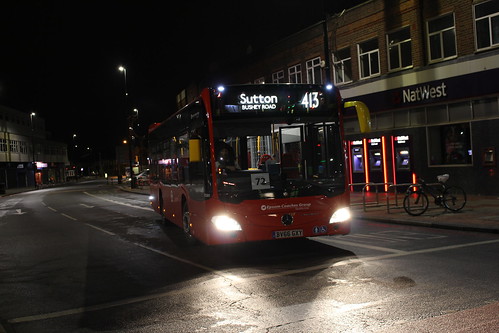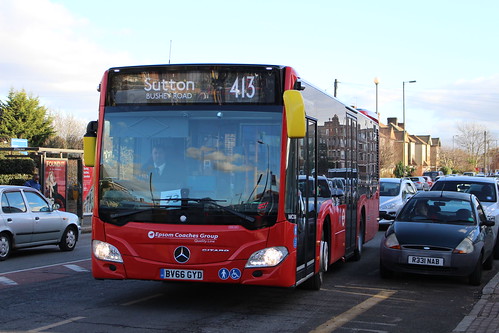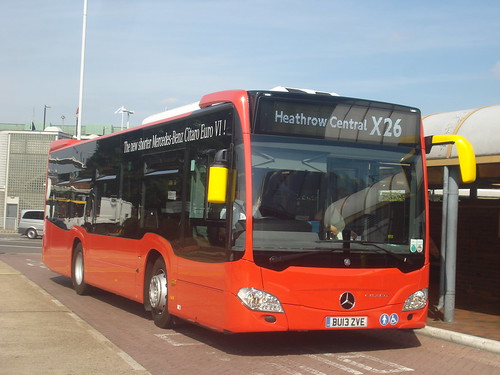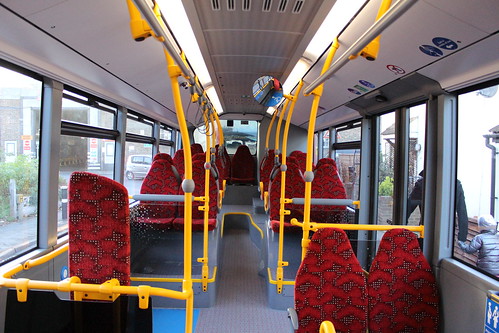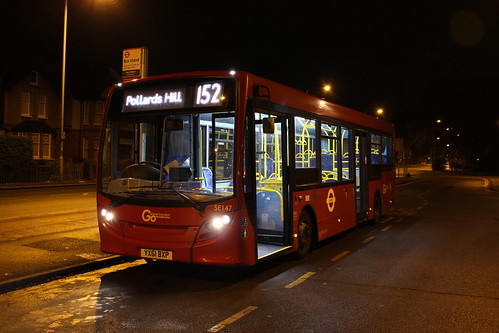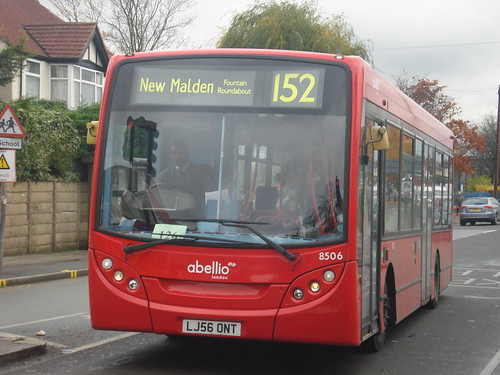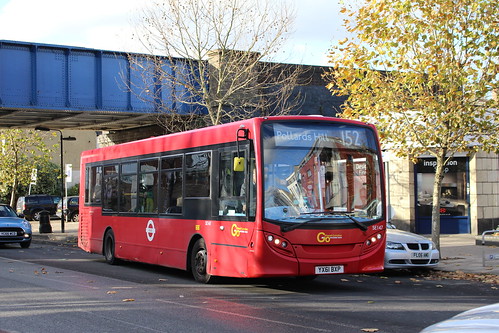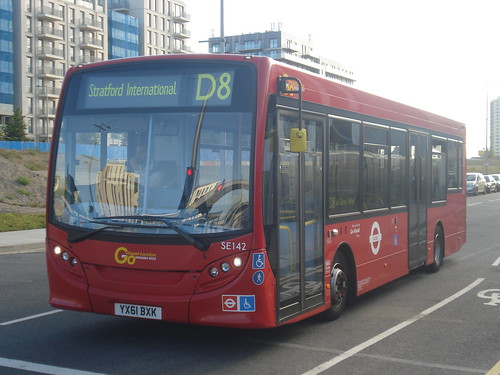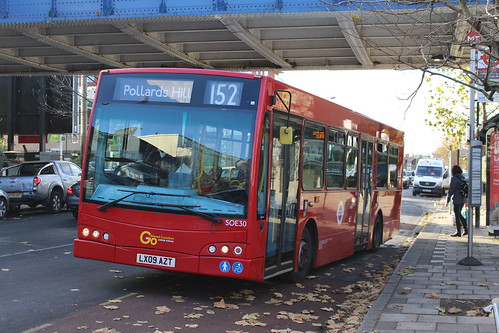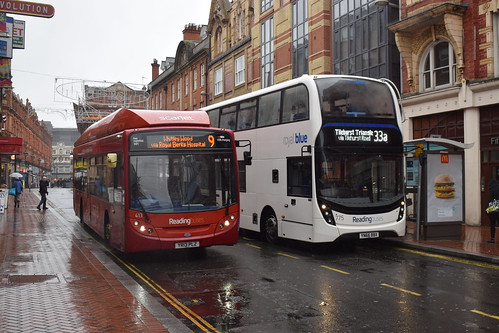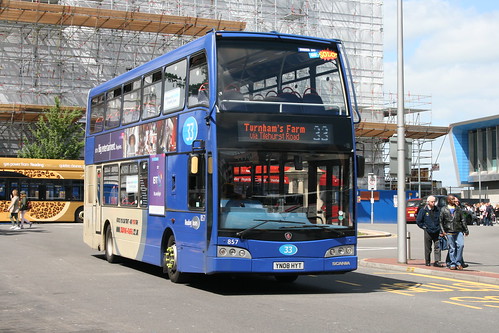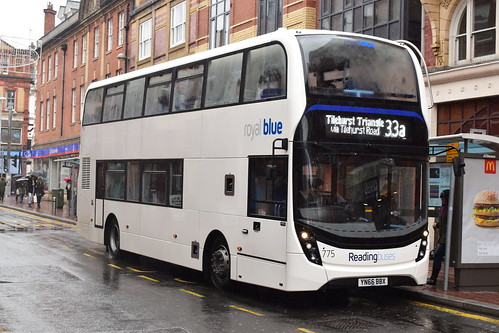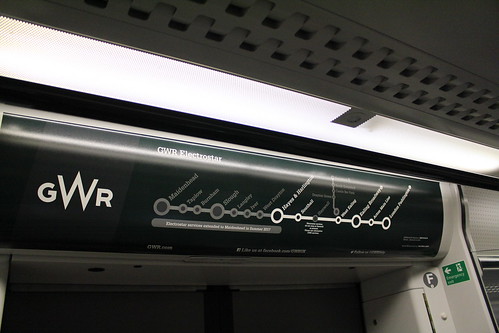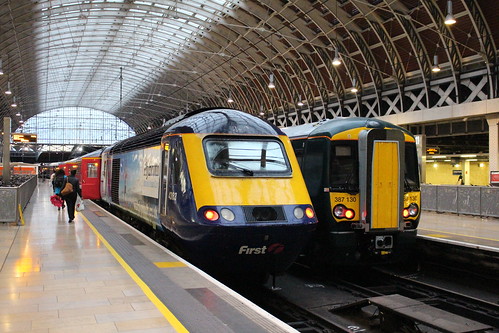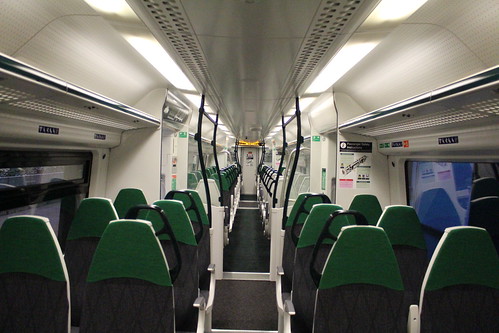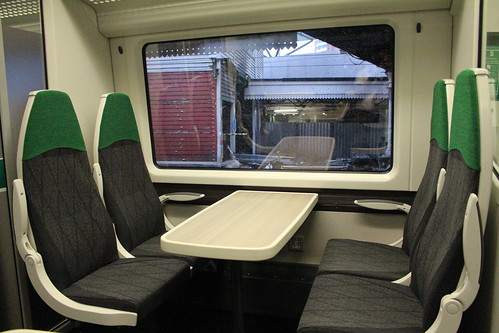A nice easy(!) topic to discuss for my first ever WLTM blog post, and something that took way outside of my London comfort zone. There will be more about me at the bottom of this post ...
The bi-annual European BusExpo event returned to the NEC in Birmingham this year, and there was, at least vehicle-wise, a greater focus upon provincial buses than in previous years. In addition to provincial buses, the main focus of 2016's Bus Expo was on the varying forms of electric and gas powered vehicles. The primary aim of my visit to the NEC was from an enthusiast point of view looking at the newest ranges of vehicles being demonstrated, so I was there, camera in hand, ready to snap the latest designs and vehicle technologies coming off the shelf.
The first vehicle I came to was a world first. This Scania ADL E400 is the world's first Euro 6 bus, powered by food scraps and sewage waste alone. This bus is likely to be used at Nottingham.
|
|
| Scania unveiling the world's first Bio Gas bus (© Tommy) |
Next to the Scania "stall" was Mercedes-Benz. Their demonstration vehicle was a McGill's "ClydeFlyer" Citaro. McGill's have since announced they are gaining a further 14 new Citaros for their Clyde express routes.
 |
| McGill's Mercedes-Benz Citaro (© Tommy) |
Following on from Mercedes-Benz you arrived into the Optare area. Optare were showcasing three different vehicles, two were London oriented and one provincial. The first of the London vehicles was an electric version of the Optare Metrodecker on trial with Go-Ahead on the 486.
There were a few "first time" experiences on buses whilst at the NEC and the first came whilst trying to enter the Metrodecker. Height room for me through doors on any bus had never been an issue, but did when I tried to enter to Metrodecker through the rear doors as my forehead soon found out!
This Metrodecker EV is believed to be going on trail with Go-Ahead London, reinforced by the route 36 blinding, and the inclusion of London Central legal lettering!
 |
| Optare Metrodecker EV (© Tommy) |
In addition to the Metrodecker, Optare were also showing their new MetroCity range for both London and provincial buyers. The London version was the electric MetroCity EV (top), in London Buses red with "green leaves", and the provincial version was the Metrocity xFE (bottom).
 |
| Optare MetroCity EV (© Tommy) |
 |
| Optare Metrocity xFE (© Tommy) |
Moving around the showroom from Optare, you came to the Alexander Dennis (AD) display and stall area. Alexander Dennis had the greatest number of buses on show, tied with Wright, four. The AD vehicles were an electric BYD E200 for Go-Ahead's Red Arrow routes in Central London, a provincial E400-City demonstrator and one of the new pink E200 MMCs for Trentbarton's Mickleover route.
Also on show was an LCEB compliant E400 MMC for Reading Buses' Royal Blue route 33. The Reading Buses E400 is powered entirely by compressed Bio-Gas (CBG) comprised from farm, food and sewage waste, similar to the Scania E400.
 |
| Go-Ahead ADL BYD E200 SEe35 (© Tommy) |
 |
Royal Blue Reading Buses ADL E400
(© Tommy) |
 |
| ADL E400 City (© Tommy) |
 |
| ADL E200 MMC (© Tommy) |
After the ADL collection was the BYD (Build Your Dreams) section, and on display was one of Metroline's Chinese built K8SR electric double-deck BYDs, BYD1474. Five of them have been built and are in use at Willesden Garage running on routes 98 and N98, and are numbered BYD1471-1475. The first entered service on May 5th driven on a special working by TfL's Head of Surface Transport, Leon Daniels.
 |
| Metroline BYD1474 (© Tommy) |
The biggest display stall both by quantity and star attraction was Volvo's new electric B5LHC chassis, fitted with a Wrightbus short routemaster (SRM) body, with the "C" referring to the fast Conductive charging system that relates to the overhead charging via the pantograph. The bus is charged via roof-mounted charging rails from a pantograph mounted to a charging station, as demonstrated below. The aim is that the bus would be charged from fixed spots along a route and at the termini. The bus works the same as a Volvo B5LH, that is it can operate at time in pure diesel, pure electric, or both, and would have the ability to travel up to 7km in pure electric mode without a recharge.
 |
| Wright's new electric B5LHC SRM (© Tommy) |
The interior is the basic New Bus for London (NBfL) with gold grab poles and red/grey striped/checked moquette, in two door format with a bank row of seats at the rear of each deck. The upper deck is the same as the hybrid SRM version but the downstairs is a different matter. In this electric SRM, the spacing between the front and rear doors, normally comprising of a luggage rack and four seats is instead replaced by a "battery cell pack" compartment. This compartment stretches from the front doors to the rear and rises to almost the top of the window level, to the location of the side blind box. This means that the driver cannot see the rear doors of their bus using their mirrors and has to instead rely completely on their little camera. Two of these B5LHCs have been ordered by TfL for trialling.
Next to Volvo's B5LHC Wrightbus SRM, was another Volvo chassis, the B5TL, with a Wrightbus Gemini 3 open top body in Edinburgh Tour livery.
 |
| Wright B5TL Gemini 3 open top (© Tommy) |
Wrightbus had their own stand with their own in-house designs. Wrightbus were displaying two single deck vehicles and two double deck streetdecks.
The first of the two singles was a door forward (DF) Streetlite for MetroBus in "Fastway" livery for route 100.
 |
| Wright Streetlite - MetroBus 6104 (© Tommy) |
The other single deck on display was one of Wrightbus' new electric single decks. The bus is the Wrightbus StreetAir EV. This is based on the Streetdeck chassis but with the classic Wrightbus single deck body at a length of 10.6m. At least one bus is due to be trialled with Go-Ahead and has been seen route testing along the 360. The StreetAir shown below was displayed with an Arriva interior so one would suggest that Arriva will also be trialling the StreetAir, possibly on the 312.
 |
| Wright StreetAir EV (© Tommy) |
The two Wrightbus streetdecks were both from provincial operators. On show were Reading Buses 906 and Lothian 441. The interior of 441 has similarities with the New Bus for London, with the inclusion of "spot lights" on the upper deck and glass on the upper deck front support pillars in a similar fashion to the LTs and the electric SRM.
 |
| Wright's new Streetdeck Gemini 3s; Reading Buses 906 and Lothian 441 (© Tommy) |
Also on display was a new electric single deck, Yutono E12 B39F is blue and white Arriva livery. It is very unlikely that TfL will order these vehicles due to the very small space for the front blind display.
 |
| Arriva E12 B39F Yutono (© Tommy) |
The final display item was a new AD E200Dart for the Isle of Wight's Southern Vectis. HF66 CHH, 2751, stands up proud on Totalkare hydraulic jacks.
 |
| AD E200 - Southern Vectis 2751 (© Tommy) |
Finally a bit about me! I have a vast interest in London's transport both from the early days of LT with RMs, RTs and RFs right up to the modern day with NBfLs and the vast array of hybrid deckers. Within London I like keep track of the London Bus network and London's vast rail network. Primarily I like to cover North West London and Central London as they are closet to my home in Harrow, but have been known to go further afield! I post my wanderings on Flickr, which can be viewed here:
https://www.flickr.com/photos/127662272@N07/?deleted=15240589409. I do also have a YouTube channel but I haven't used that for years. I mainly seek out the unusual workings in London, but also cover route changes and just general pictures.
I have been brought up into a transport family with parental connections going back nearly 40 years in the LT era, and I keep the tradition going as I too now work in the transport industry.
This blog post is the first of what I hope will be many...
